An older couple, living in the sandhills region of South Carolina, moved into the house 2 years ago and were looking to refresh their front and rear foundation plantings. Specific asks that they had were:
Improve the soil health- Despite the soil being sandy, it was fairly compacted and lacking in organic matter. Besides supporting the new plantings, they wanted to enrich the soil to give them greater flexibility in adding to the plantings in the future.
Add color / flowers with multiple season interest
Add foundation shrubs that were size appropriate with hydrangeas in the back patio: Previously, they add overgrown Tea Olives and Camellias that were shading out windows and encroaching on the entrance walk.
Make the garden more friendly to pollinators and wildlife.
To address the soil, we added ~1.5-2” of compost and used a broadfork to de-compact the soil and lightly mix in the compost. Using a broadfork allows us to loosen the soil without destroying the soil structure and activating the seedbank like a tiller would. We weren’t looking to make this a super rich soil, but were just looking to add organic matter to improve the soil structure and moisture retention.
For the south/southeast facing back patio, we limbed up the existing Tea Olive and added 3 Little Lime Panicled Hydrangeas along the foundation. We then added a mix of low growing native pollinator friendly plants (Moss Phlox - Phlox subulata, Threadleaf Coreopsis - Coreopsis verticillata, Homestead Purple Verbena - Verbena canadensis homestead purple, and Mouse-Eared Coreopsis - Coreopsis auriculata ‘Nana’) at the front of the border. We used Society Garlic and Russian Sage interplanted with Prairie Dropseed just behind the lower growing flowers. While the society garlic and russian sage aren’t native, they are both good for pollinators and increase the deer resistance of the planting.
The front was north/northwest facing, but very open. Along the side of the garage, we replaced 2 Tea Olives, which were too large for the space and encroaching on the front entrance path, with 2 Taylor Juniper Eastern Redcedars which are highly columnar (only 3-4’ in width) and like dry soils. As a border, we planted Nash’s Blue Eyed Grass (Sisyrinchium nashii ‘Suwannee’), which is a spring blooming, well behaved, native member of the iris family.
The front entrance planting was previously filled with a mix of highly manicured larger Chinese Hollies (against the house) with ball shaped dwarf yaupon hollies of various sizes throughout the middle of the bed. We removed one of the Chinese hollies which was blocking a sprinkler head. To provide contrast with the dark color and highly sculpted hollies, we interplanted the hollies with pink muhly grass, with the idea that the pink seed heads and fine-textured grass blades would rise above the hollies. In front of the forward-most muhly, we planted several Color Guard Yucca (Yucca filamentosa), which is a dwarf variegated yucca, that provides a nice contrast to the fine texture of the pink muhly grass. In front of the muhly and yuccas, we planted Homestead Purple Verbena, Threadleaf Coreopsis, Society Garlic, Mouse Eared Coreopsis, and Moss Phlox. As a groundlayer / green mulch, we added purple lovegrass (Eragrostis spectabilis), which is a low growing drought tolerant warm season grass that puts out attractive purple seed heads in late summer.

Before: Front Entrance

Before: Front - garage on left and entrance on front

Before: Back Patio

Design / Concept: Back Patio

Design / Concept: Front

Garage after removal of Tea Olives and Camelia

Front: After removal of middle Chinese Holly
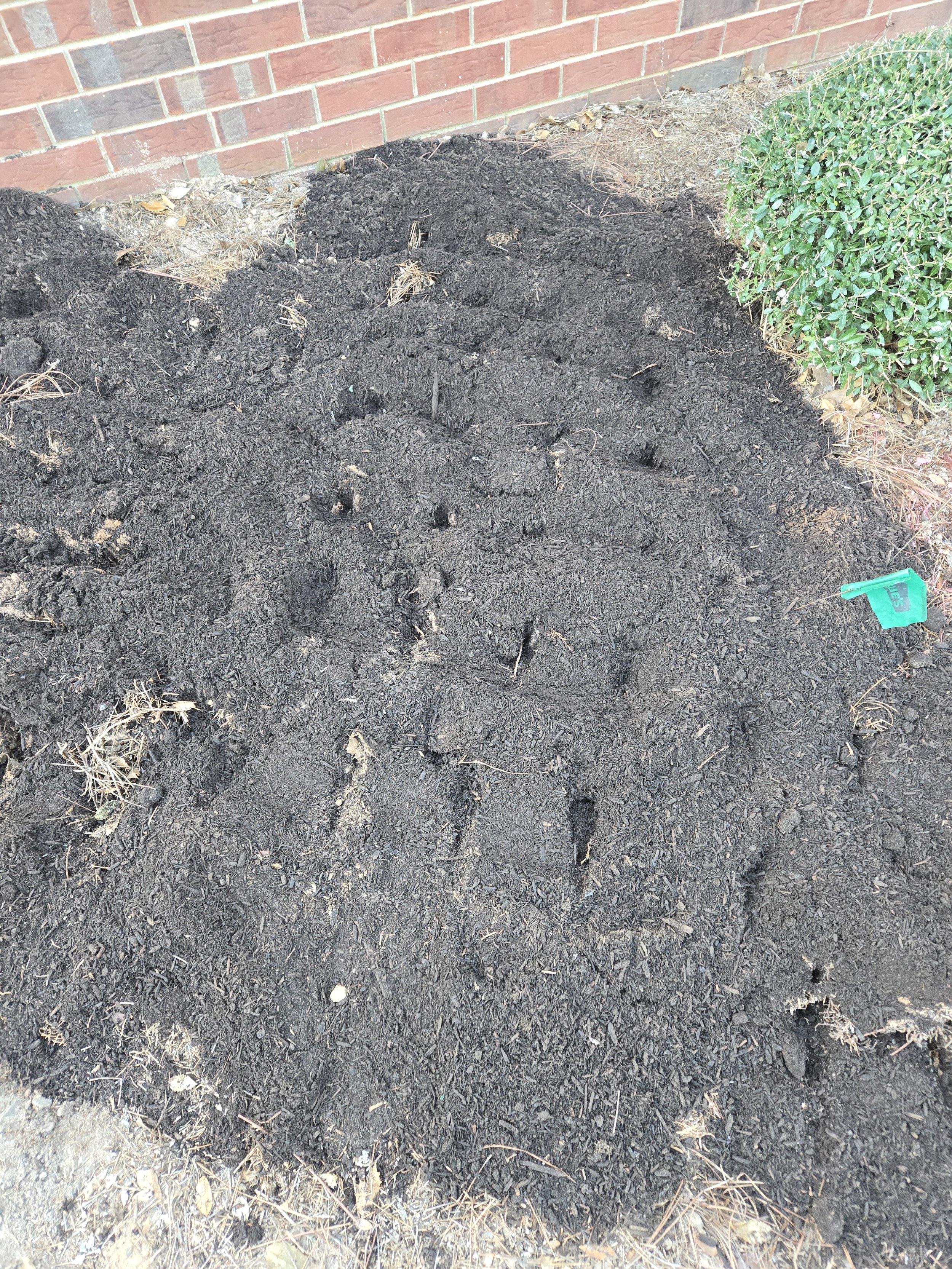
Soil: After top dressing with compost and broadforking to lightly incorporate compost and decompact

After: Back Patio

After: Front - garage
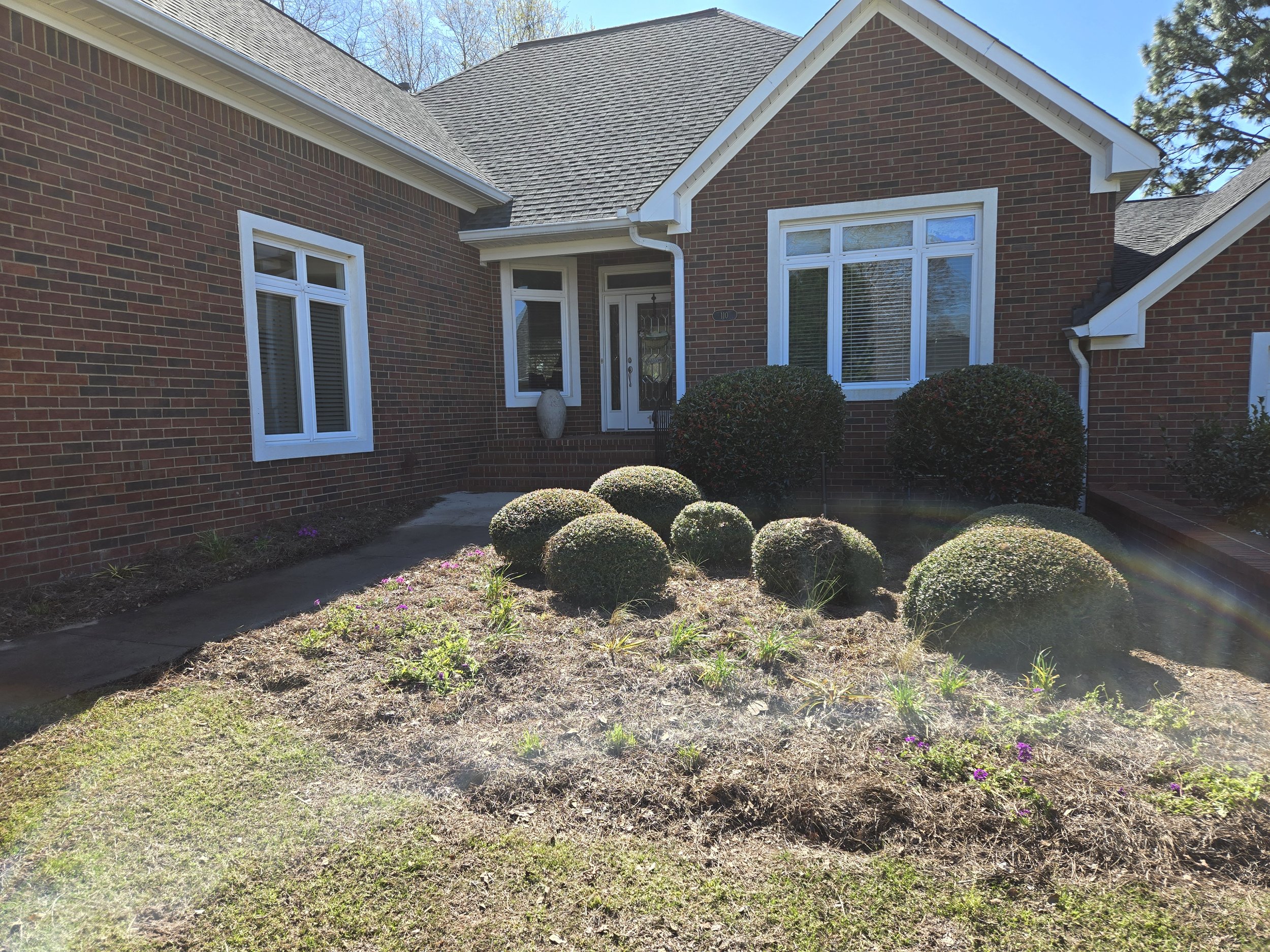
After - front entrance
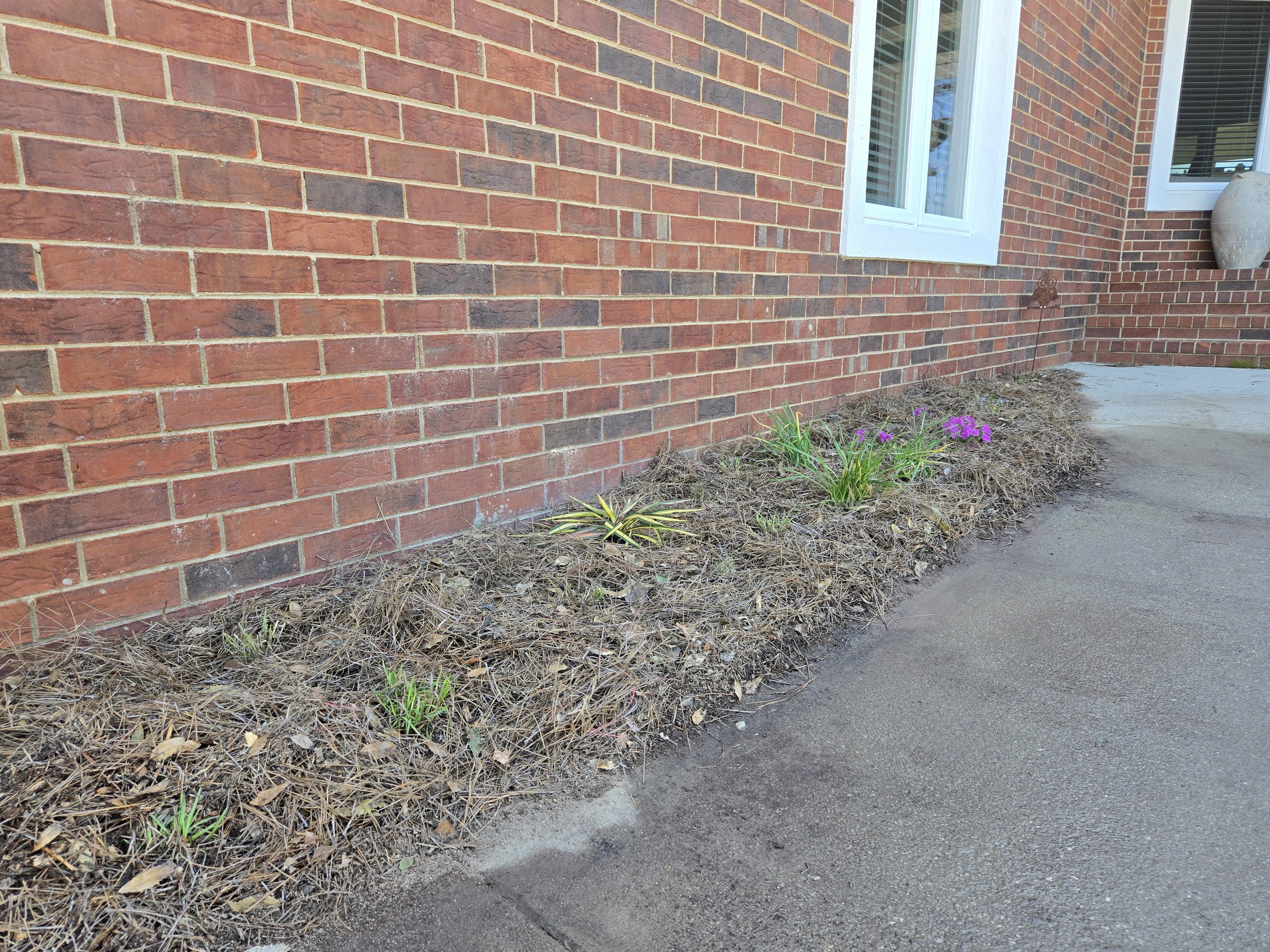
After: Front entrance walk bordering back of garage
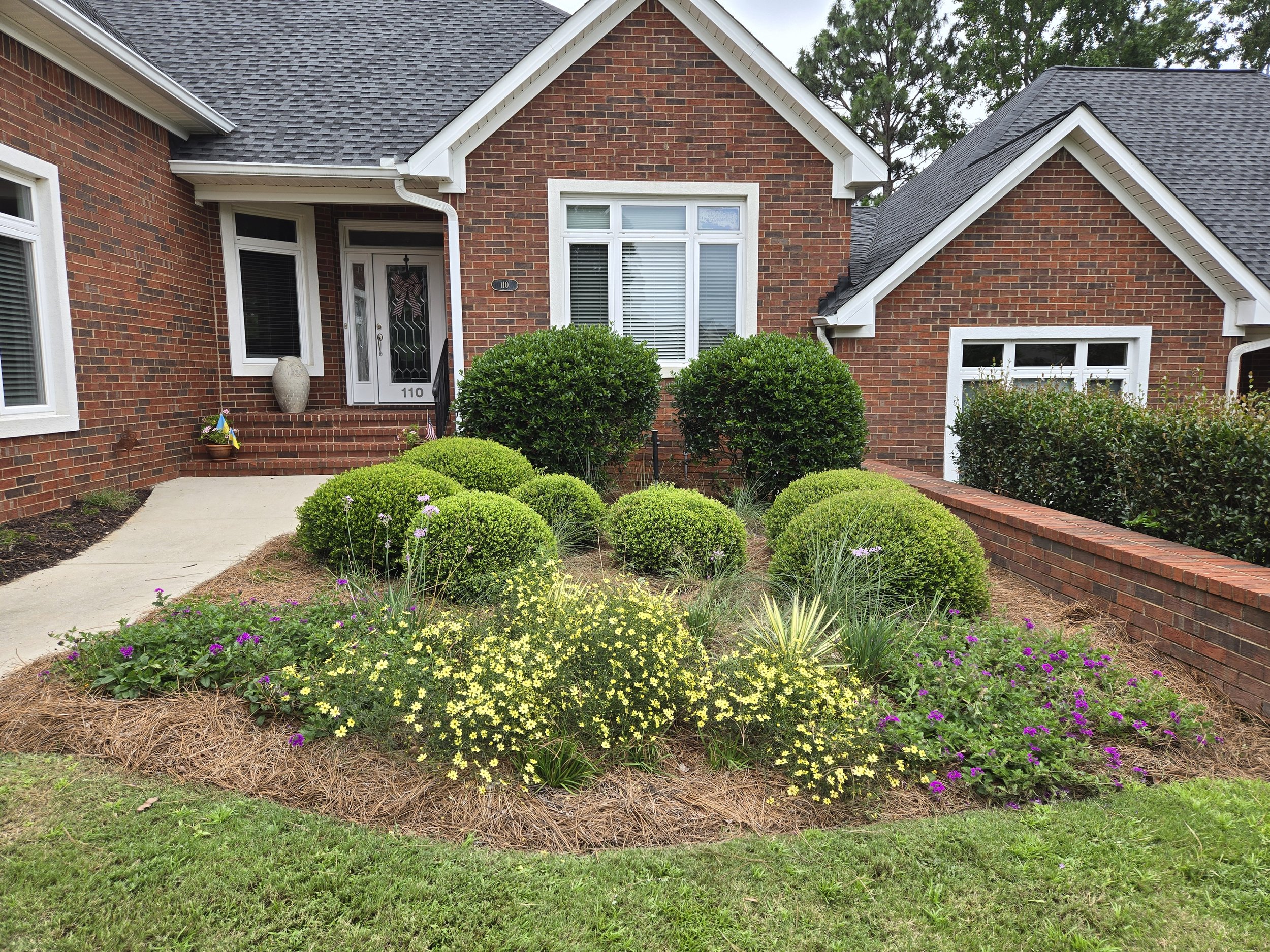
3 Months After: Front Entrance

3 Months After: Front Entrance, close up of Threadleaf Coreopsis, Homestead Purple Verbena, Society Garlic and Color Guard Yucca
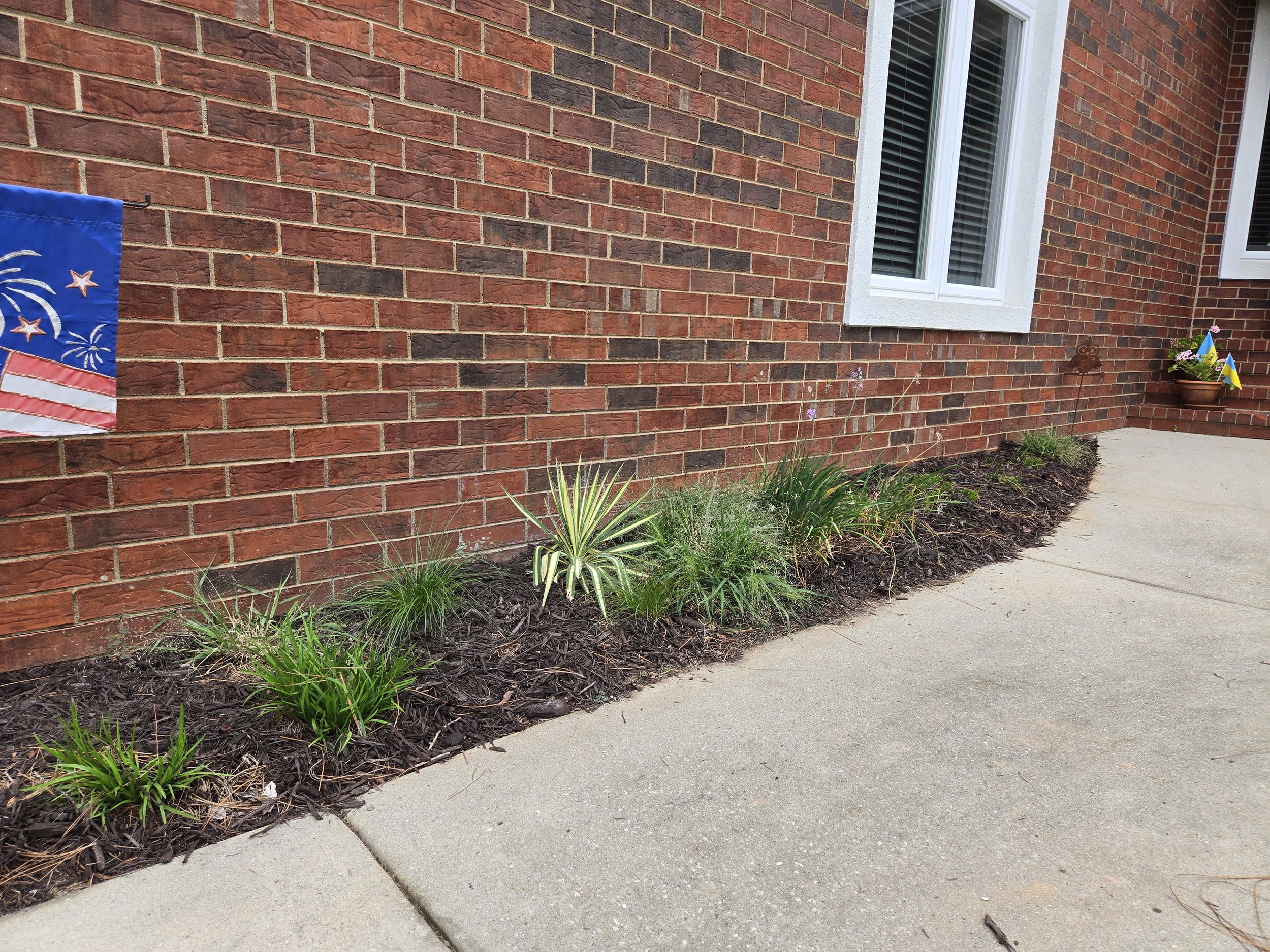
3 Months After (Front Entrance Walk Border): Prairie Dropseed, Purple Lovegrass, Color Guard Yucca and Moss Phlox at end.
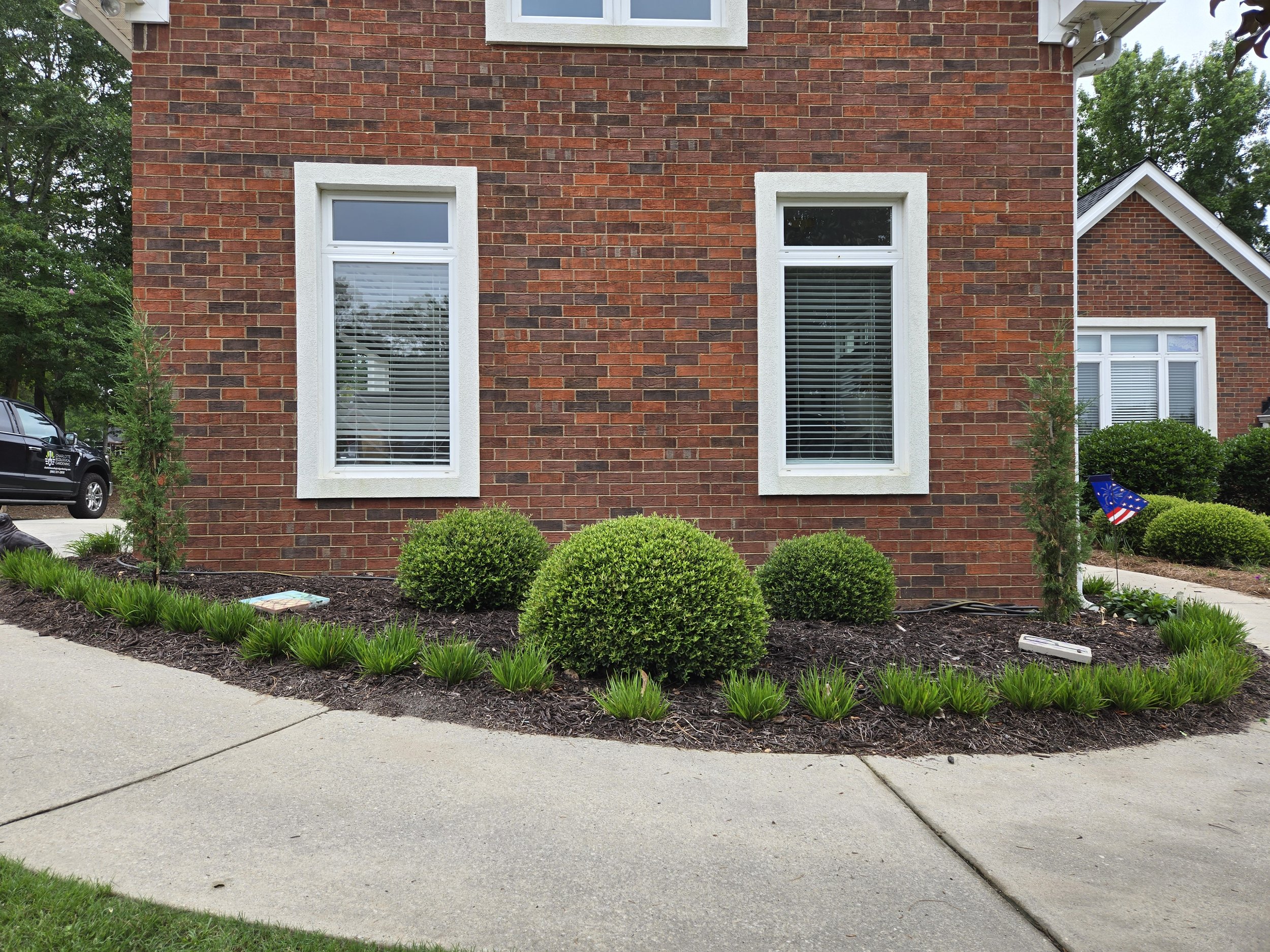
3 Months After (Front - Garage): Taylor Junipers with Blue Eyed Grass Border

3 Months After (Driveway Border with Mouse Eared Coreopsis and volunteer squash)
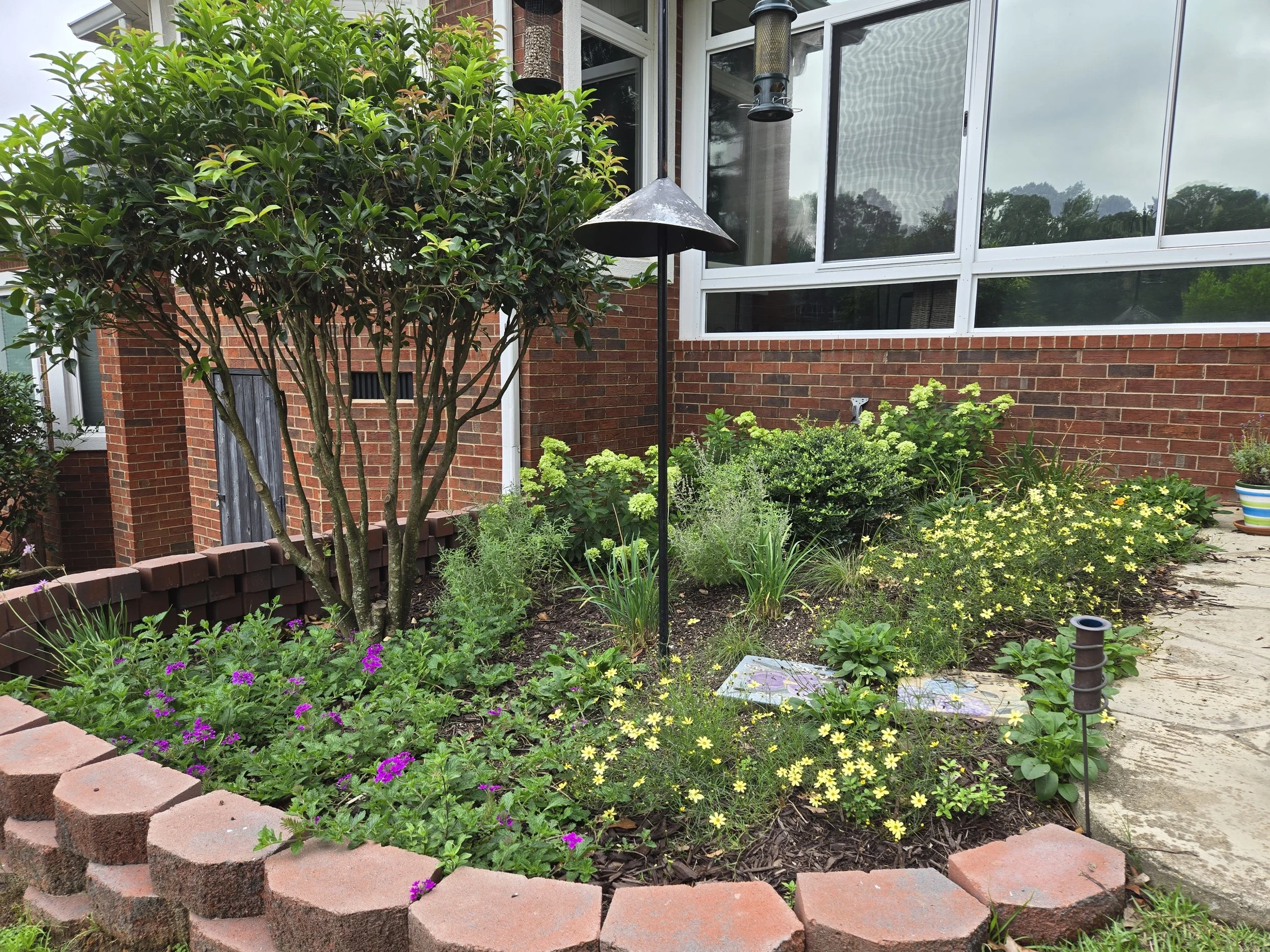
3 Months After (Back Patio): Homestead Purple Verbena, Thread Leaf Coreopsis, Russian Sage and Dwarf Panicle Hydrangea

6 Month's Post Installation - Muhly starting to provide nice contrast with manicured dwarf yaupon hollies
